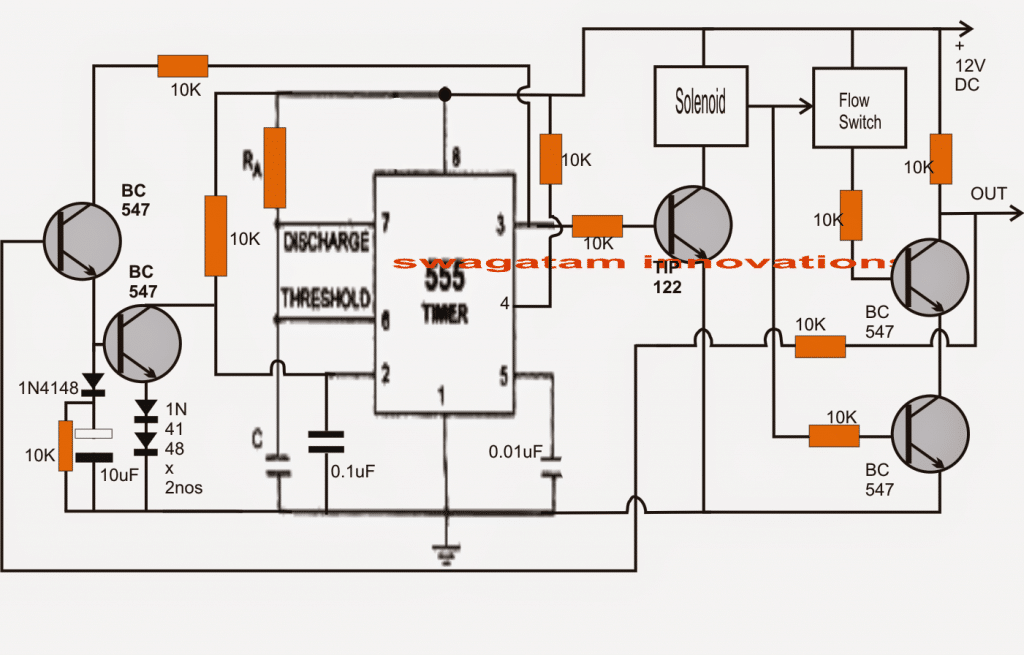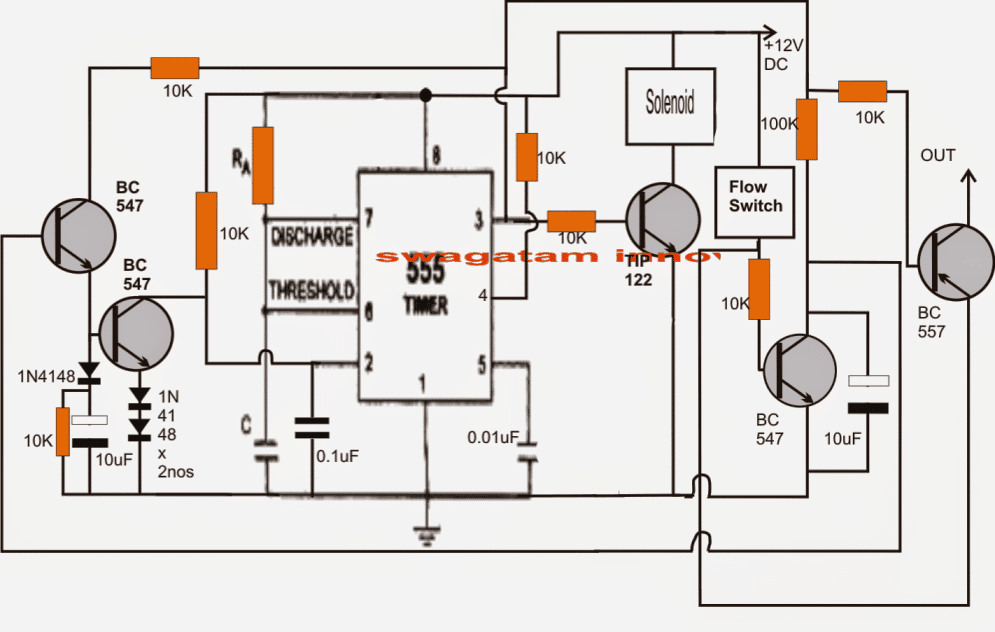In this article I have explained a customized water flow controller circuit with timer.he idea was requested by Mr. Daljeet Singh Sokhey.
Technical Specifications
Right now I am working on a different project and would like your help. There are 2 inputs and both must remain high for a period of 30 seconds for the one single output to go high (AND switch)
If either one fails, the timer should also stop and reset and then start again when both inputs are high again.This is basically to check for the availability of water flowing thru a pipe.
I am using a solenoid valve to control the switching on and off of the water and a flow switch to confirm that the water is flowing.
This switch AND the solenoid must remain continuously on for 30 seconds to confirm that the water is flowing properly. And if this condition is satisfied it should give a high output that can be used to trigger other operations.
You can name it whatever you like, something like Water Flow Confirmation Circuit or anything.The timer will keep only the solenoid ON.
The flow switch turning ON is dependent on the solenoid allowing the water to flow successfully.
That will result in the voltage going high from the flow switch. and this high voltage from flow switch must be sustained for as long as the solenoid is ON(30 seconds). if during that time period, the voltage from the flow switch drops to LOW, the timer should reset which would switch off the solenoid.
Maybe we can add here another timer circuit which will make it retry after, say, 3 minutes or so (adjustable).
And once the solenoid and the flow switch have remained on for 30 seconds, it should give a high output which can be coupled to a relay to switch on some other circuit.
The solenoid needs to be switched off afer 30 seconds. Solenoid and the switch are both 12 V dc
The Design
In the proposed water flow controller circuit, the IC 555 is configured as the 30 second timer through its monostable mode.
When power is switched ON, the 0.1uF capacitor at pin#2 of the IC provides a momentary logic zero to this pin triggering the IC output high, the IC starts counting as soon as this takes place.
The above high delivered at pin#3 of the IC actuates the transistor and the connected solenoid.
The solenoid opens the gate for the water to flow, which is detected by the flow switch and its switch ON too.
The above operations presumably happen too quickly and a relatively simultaneous positive triggers from the two devices reach the bases of the two NPN transistors which are arranged to form a "NAND" gate.
With both the transistors switched ON, we have a zero logic across the collector of the upper transistor, indicating the correct state of the circuit and both the devices functioning correctly.
In the meantime the IC counts for 30 seconds, after which its pin#3 reverts to a low switching OFF both the devices which obviously renders a high across the shown OUT terminal of the circuit providing the intended "30 second lapsed" signal to the following stage in the system.
In case any of the devices malfunction, the respective NAND transistor is deprived of its base trigger triggering a high at the output.
Under the above condition the upper transistor at the extreme left receives a base trigger from the OUT terminal of the circuit and it switches ON, however since the IC 555 is sill counting with its pin#3 high allows the voltage from pin#3 to pass via this transistor to the base of the lower transistor which after a certain delay resets and restarts the 555 IC operations by grounding its pin#2.
The operation then repeats.
The delay can be altered by tweaking the value of the 10uF capacitor.
Circuit Diagram

As per the corrective suggestions the above circuit is modified as shown below, please refer to the comments for the details:
